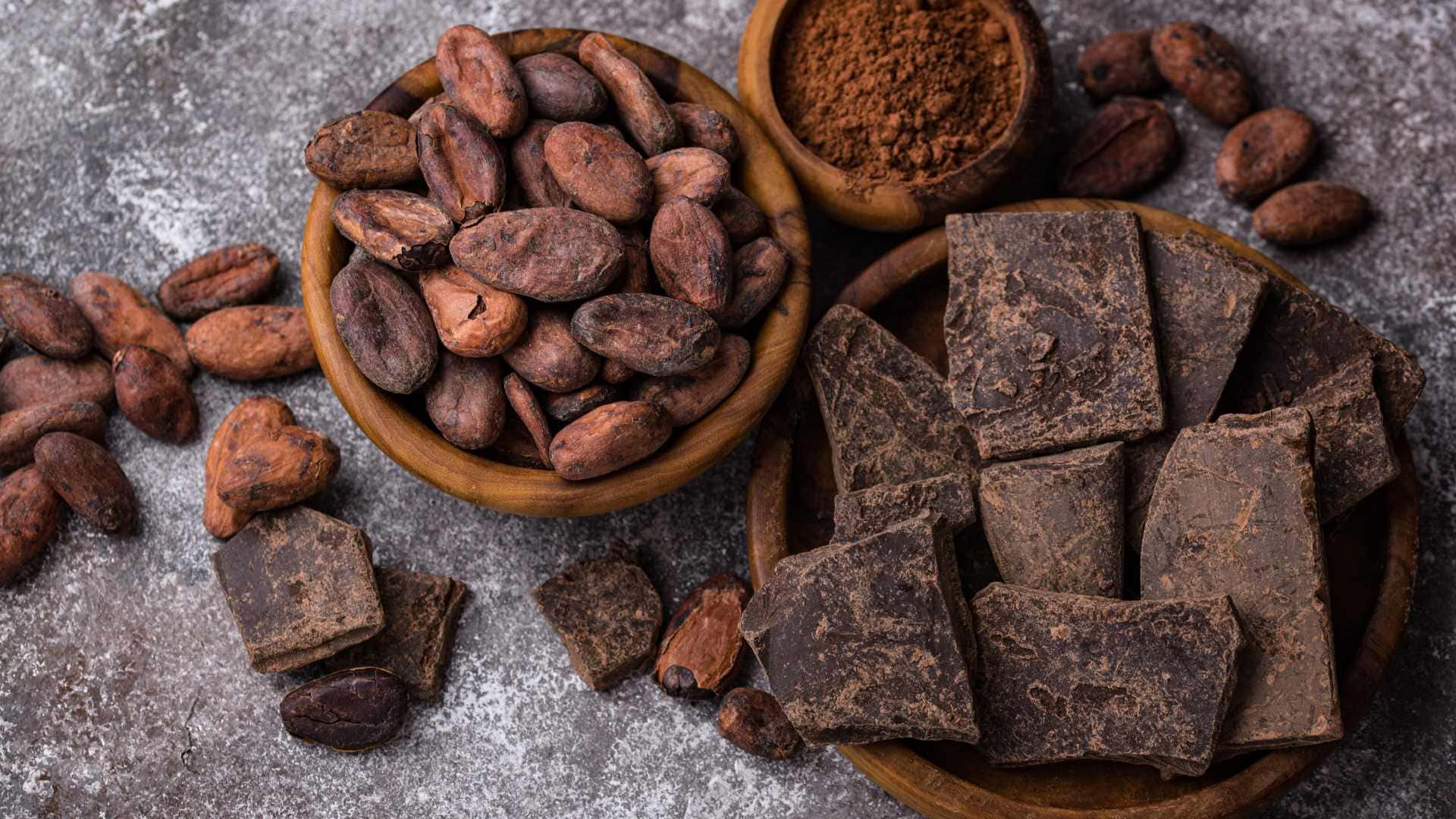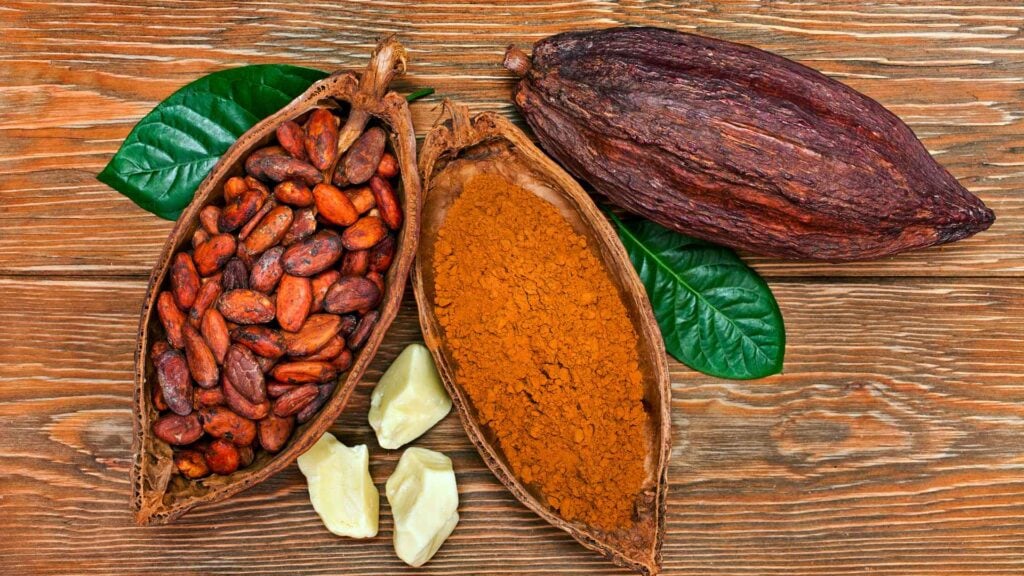When it comes to the world of chocolate, two terms often surface—cocoa and cacao. Both derive from the same plant, the Theobroma cacao tree, yet they undergo different processing methods, leading to distinct characteristics and health implications. In this article, we will explore the origins, processing methods, nutritional content, and health benefits of cocoa and cacao, providing a comprehensive comparison to determine which is healthier.
Summary
Cocoa and cacao come from the Theobroma cacao tree but differ in processing and nutritional content. Cacao is less processed, retaining more antioxidants, essential minerals, and mood-enhancing compounds, making it a nutrient-dense "superfood." Cocoa, which undergoes roasting, has a richer flavour but loses some nutrients and may contain added sugars and fats. Cacao is better for maximising health benefits, while cocoa is more versatile and accessible for cooking. Both can be part of a healthy diet if consumed mindfully.
Origins And Processing Of Cocoa And Cacao
Cacao and cocoa originate from the same source—the cacao bean found within the fruit of the Theobroma cacao tree. However, the divergence in their processing methods leads to significant differences in their final form.
- Cacao is the raw, less processed form of chocolate. After harvesting the cacao beans, they are fermented and dried. These dried beans can be cold-pressed to create cacao powder or processed into cacao nibs. The product retains most of its natural nutrients, offering a robust, unroasted flavour.
- Cocoa, on the other hand, involves an additional step—roasting. The cacao beans are roasted at high temperatures, changing the flavour profile—making it sweeter and creamier—and altering the nutritional composition. The roasted beans are then ground into a powder, which can be further processed into the familiar cocoa products found in most stores.\
Nutritional Comparison Of Cocoa And Cacao
Understanding the nutritional differences between cocoa and cacao requires a closer look at their respective compositions.
Cacao:
- High in Antioxidants: Cacao is packed with flavonoids, powerful antioxidants that combat oxidative stress and reduce inflammation. These compounds are essential in lowering the risk of chronic diseases such as heart disease.
- Rich in Essential Minerals: Cacao contains significant amounts of magnesium, iron, potassium, and calcium. These minerals are vital in maintaining overall health, including muscle function, oxygen transport, and bone strength.
- Mood-Enhancing Compounds: Cacao is a natural source of serotonin, dopamine, and phenylethylamine, neurotransmitters that promote happiness and well-being.
Cocoa:
- Reduced Nutrient Content: Cocoa's roasting process reduces its flavonoid content, making it less nutrient-dense than cacao.
- Versatile and Flavorful: Despite losing some nutrients, cocoa remains popular due to its sweet flavour and recipe versatility.
- Potential Additives: Commercial cocoa products often contain added sugars, milk fats, and oils, which can increase the calorie content and reduce the overall health benefits.
Health Benefits Of Cocoa And Cacao
Both cacao and cocoa offer health benefits, but their effects can vary based on their processing and consumption.
Cacao:
- Cardiovascular Health: Cacao's high antioxidant content helps reduce bad cholesterol levels, supports heart health, and potentially lowers the risk of stroke.
- Mental Health: Cacao’s mood-enhancing compounds help alleviate stress and promote well-being. It may also improve cognitive function by increasing blood flow to the brain enhancing memory and concentration.
- Overall Nutritional Support: With its rich supply of essential minerals, cacao contributes to the proper functioning of various bodily systems, from maintaining strong bones to supporting a healthy immune system.
Cocoa:
- Digestive Health: Cocoa contains dietary fibre, which aids in digestion and supports gut health. Even though some nutrients are lost during roasting, the fibre content remains beneficial.
- Blood Pressure Regulation: Cocoa flavonoids help regulate blood pressure, contributing to cardiovascular health. However, the effectiveness of cocoa products with added sugars and fats may be reduced.
- Culinary Benefits: Cocoa’s sweet and creamy flavour makes it a popular choice for satisfying sweet cravings. Consuming in moderation provides a comforting balance between indulgence and well-being.
Deciding Which Is Healthier: Cocoa Or Cacao?
When deciding between cocoa and cacao, it's important to understand that both have unique characteristics, benefits and uses. For example, choosing between two distinct paths that offer a different experience is like choosing between two distinct paths.
Cacao:
- Nutritional Value: Cacao is widely recognised as a superfood in its raw form. It is packed with antioxidants, which help combat free radicals and support overall health.
- Essential Minerals: Cacao is a rich source of essential minerals such as magnesium, iron, potassium, and calcium, crucial for various bodily functions, including heart health, muscle function, and maintaining healthy bones.
- Mood Enhancement: Cacao contains compounds like theobromine and anandamide, known to have mood-enhancing effects. These compounds can help elevate mood, reduce stress, and promote well-being.
- Minimal Processing: Since cacao is minimally processed, it retains much of its natural nutritional profile, making it an excellent choice for those looking to maximise their intake of nutrients from whole foods.
- Health Benefits: Due to its high concentration of nutrients, regular consumption of raw cacao can improve heart health, cognitive function, and overall vitality.
Cocoa:
- Flavour and Usability: Cocoa is known for its rich, deep flavour, which is why it is a popular ingredient in various culinary applications, from baking to making hot chocolate.
- Processing: Cocoa is derived from cacao beans roasted at high temperatures. This process reduces the overall nutritional content but enhances the flavour, making it more versatile in cooking and baking.
- Nutrient Content: While cocoa is less nutrient-dense than raw cacao, it still contains beneficial compounds like flavonoids linked to heart health and improved circulation.
- Balanced Diet: When consumed mindfully, cocoa can be part of a healthy diet. It offers a comforting, familiar taste and can be used in sweet and savoury dishes, adding depth and richness to various recipes.
- Accessibility: Cocoa is often more readily available and affordable compared to raw cacao, making it an accessible option for everyday use in a wide range of recipes.
Practical Tips For Using Cocoa And Cacao
To fully harness the unique benefits of cocoa and cacao, you must know how to incorporate them effectively into your diet. Here are some practical tips to get the most out of these ingredients:
1. Choose Raw Cacao For Smoothies
- Nutrient Boost: Add raw cacao powder to start your day with a nutrient-rich smoothie. Its deep, chocolatey flavour complements fruits like banana berries and greens like spinach or kale.
- Enhance Flavor and Health: Cacao's natural bitterness can balance the sweetness of fruits, making your smoothie not only delicious but also packed with antioxidants, minerals, and mood-enhancing compounds.
- Versatile Use: Cacao can be blended with almond or oat milk for a creamy texture, and you can add a touch of honey or dates for natural sweetness if desired.
2. Opt For Dark Chocolate
- High Cacao Content: Choose dark chocolate with a high cacao content (70% or more) when indulging in chocolate. The higher the cacao percentage, the more health benefits you'll gain, including a higher concentration of antioxidants and lower sugar content.
- Enjoy in Moderation: Dark chocolate is a great way to satisfy sweet cravings while also benefiting from the natural compounds found in cacao that promote heart health and overall well-being.
- Creative Uses: Dark chocolate can be used in desserts, melted into sauces, or enjoyed as a satisfying, healthy treat.
3. Experiment With Cocoa In Baking
- Rich Flavor Addition: Unsweetened cocoa powder is a versatile ingredient in baking. It adds a rich, deep flavour to cakes, cookies, brownies, and savoury dishes like chilli without adding unnecessary sweetness.
- Health-Conscious Baking: Using unsweetened cocoa powder gives you more control over the sugar content in your recipes, allowing you to create healthier versions of your favourite treats.
- Enhance Texture: Cocoa powder can also improve the texture of baked goods, providing a tender crumb to cakes and cookies while intensifying the chocolate flavour.
4. Balance Your Intake
- Mindful Consumption: While cocoa and cacao offer health benefits, it is important to consume them in moderation. Please pay attention to portion sizes, especially when enjoying cocoa-based products, as they sometimes contain added sugars and fats.
- Choose Wisely: Opt for cocoa products with minimal additives, such as unsweetened cocoa powder or dark chocolate with a high cacao content. This ensures that you're getting the most out of these ingredients without the drawbacks of excessive sugar or unhealthy fats.
- Incorporate into a Balanced Diet: Consider integrating cocoa and cacao into a balanced diet that includes a variety of nutrient-dense foods. Use them to complement other healthy choices, not as the main source of nutrition.
Conclusion
In conclusion, cocoa and cacao offer distinct health benefits and culinary advantages, each suited to different preferences and dietary goals. Cacao, in its raw and minimally processed form, is rich in antioxidants, essential minerals, and mood-enhancing compounds, making it an excellent choice for those seeking maximum nutritional benefits. Its robust flavour and versatility in smoothies and raw recipes further enhance its appeal for health-conscious individuals.
On the other hand, cocoa, processed through roasting, offers a sweeter, creamier flavour that is highly versatile in baking and cooking. While it loses some nutritional value during processing, it retains beneficial compounds like flavonoids and dietary fibre. Cocoa products, particularly dark chocolate, can be enjoyed in moderation as part of a balanced diet, providing both indulgence and health benefits.
Frequently Asked Questions About Cacao
Yes, but the flavour and nutritional content will vary. Cacao has a stronger, more bitter taste, while cocoa is sweeter and creamier. Adjusting the amount and considering the dish's flavour profile is essential when substituting one.
Many commercial cocoa products contain added sugars, milk fats, and oils, which can increase calorie content and reduce overall health benefits. Choose unsweetened cocoa powder or dark chocolate with high cacao content to maximise health benefits.
Cacao contains serotonin, dopamine, and phenylethylamine, which can enhance mood, reduce stress, and promote overall well-being. Its high antioxidant content also supports brain health and cognitive function.
Consume both in moderation and choose products with minimal additives. Incorporate them into a balanced diet rich in various nutrient-dense foods. This approach allows you to enjoy the health benefits of both ingredients without overconsumption of sugars and fats.
Yes, but moderation is key. Pay attention to portion sizes and choose high-quality products to avoid excessive sugar and unhealthy fat intake. Incorporate them as part of a balanced diet for optimal health benefits.







